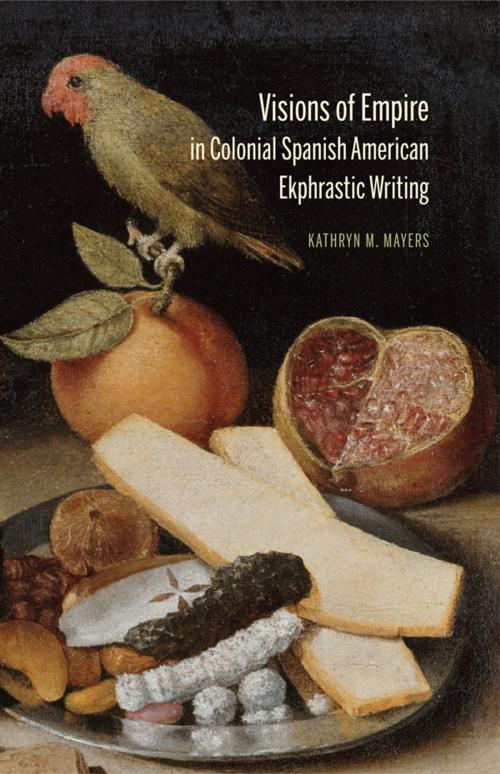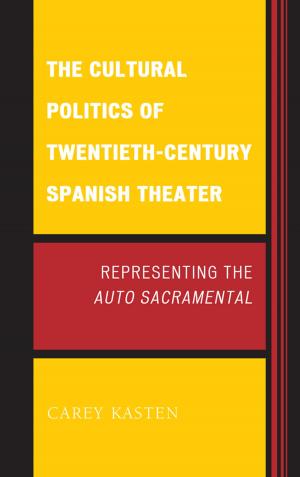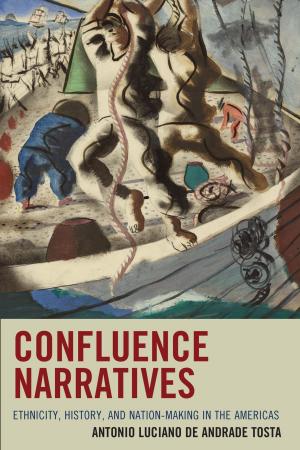Visions of Empire in Colonial Spanish American Ekphrastic Writing
Nonfiction, History, Americas, Latin America, Spain & Portugal| Author: | Kathryn M. Mayers | ISBN: | 9781611483932 |
| Publisher: | Bucknell University Press | Publication: | December 16, 2011 |
| Imprint: | Bucknell University Press | Language: | English |
| Author: | Kathryn M. Mayers |
| ISBN: | 9781611483932 |
| Publisher: | Bucknell University Press |
| Publication: | December 16, 2011 |
| Imprint: | Bucknell University Press |
| Language: | English |
The process of shaping and asserting cultural identity in viceregal Spanish America occurred as much through the medium of pictures as through the medium of writing. Focused on writing that references visual texts (ekphrasis), Visions of Empire in Colonial Spanish American Ekphrastic Writing examines the way words about pictures in the writing of three Spanish American Creoles—Hernando Domínguez Camargo, Juan de Espinosa Medrano, and Sor Juana Inés de la Cruz—negotiate the challenges that confronted the American-born ruling elite in Spanish America during the contentious transitional period between the Conquest and Independence.
In Spanish America, pictures have long served as a crucial medium for cultural communication. In vast rural and urban regions where print culture is not deeply rooted and being “cultured” is not synonymous with being “literate,” visual texts ranging from pre-Hispanic pictographic codices to Baroque architectural surfaces to postmodern painted murals have played an essential role in shaping and asserting cultural identity. During the viceregal era, texts that referenced such visual texts proliferated in Latin America, particularly among Creole elites, who found themselves trapped in an ambiguous political and social position between Spain and America. At the level of content, Creole ekphrases bear little obvious connection to categories of social privilege. On the level of form, however, these ekphrases engage conventions of representation that reveal the social contingencies of the poetic gaze. They refract the visual object through an ideologically-charged language that invokes differentials of race, class, gender, sexuality, nationality, and position within the colonial power structure.
Visions of Empire brings recent scholarship on visuality and ekphrasis to bear on twenty first-century reexaminations of criollismo to explore how cultural productions of the Spanish American Creole elite exercised relations of power, mediated social differences, and presented symbolic organizations of social space. Focusing on the way Creole adaptations of Gongoran ekphrases placed the Creoles in a position of epistemological, economic, or moral authority over peninsular Spaniards and Amerindian and casta majorities around them, this book illustrates how Creole words about pictures propose alternate visions of empire, symbolically reordering Spain’s empire in the Americas around the figure of the Creole.
The process of shaping and asserting cultural identity in viceregal Spanish America occurred as much through the medium of pictures as through the medium of writing. Focused on writing that references visual texts (ekphrasis), Visions of Empire in Colonial Spanish American Ekphrastic Writing examines the way words about pictures in the writing of three Spanish American Creoles—Hernando Domínguez Camargo, Juan de Espinosa Medrano, and Sor Juana Inés de la Cruz—negotiate the challenges that confronted the American-born ruling elite in Spanish America during the contentious transitional period between the Conquest and Independence.
In Spanish America, pictures have long served as a crucial medium for cultural communication. In vast rural and urban regions where print culture is not deeply rooted and being “cultured” is not synonymous with being “literate,” visual texts ranging from pre-Hispanic pictographic codices to Baroque architectural surfaces to postmodern painted murals have played an essential role in shaping and asserting cultural identity. During the viceregal era, texts that referenced such visual texts proliferated in Latin America, particularly among Creole elites, who found themselves trapped in an ambiguous political and social position between Spain and America. At the level of content, Creole ekphrases bear little obvious connection to categories of social privilege. On the level of form, however, these ekphrases engage conventions of representation that reveal the social contingencies of the poetic gaze. They refract the visual object through an ideologically-charged language that invokes differentials of race, class, gender, sexuality, nationality, and position within the colonial power structure.
Visions of Empire brings recent scholarship on visuality and ekphrasis to bear on twenty first-century reexaminations of criollismo to explore how cultural productions of the Spanish American Creole elite exercised relations of power, mediated social differences, and presented symbolic organizations of social space. Focusing on the way Creole adaptations of Gongoran ekphrases placed the Creoles in a position of epistemological, economic, or moral authority over peninsular Spaniards and Amerindian and casta majorities around them, this book illustrates how Creole words about pictures propose alternate visions of empire, symbolically reordering Spain’s empire in the Americas around the figure of the Creole.















